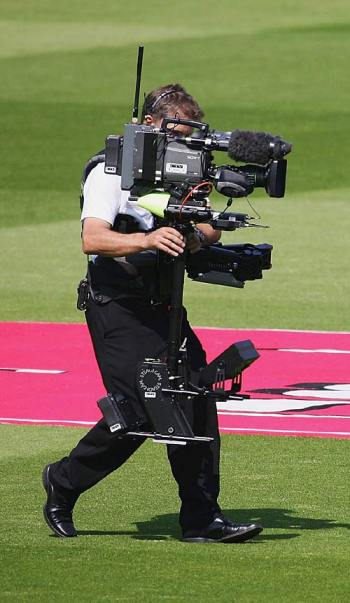Impending Armageddon
Paul King

|
|||
|
Related Links
|
|||
When I joined the Sky Sports cricket department in 2001, I was given two pieces of advice by the managing director: "Work hard - and under no circumstances go out drinking with Ian Botham." The first instruction proved easy; the second rather less so.
Producing live cricket is nothing if not unpredictable. No one turning up to the 2007 World Cup final at Bridgetown expected the umpires to forget the tournament regulations. Then there was the sandy outfield in Antigua two years later, which limited a Test match to ten balls.
And I will never forget the News of the World front page in 2010, which meant a radical change to our Sunday coverage of the Lord's Test against Pakistan. I had received an early call about the story, and spent a sleepless night wondering how to tackle it. What should our tone be? Could we condemn players who had been found guilty by a newspaper, but not yet in court? What about the future of the game? I recently looked back at tapes of our broadcast that day, and the passion of the likes of Nasser Hussain, Michael Holding and Ramiz Raja stood out. You could see it in their eyes.
Throw in rain, bad light, waterlogged outfields, floodlights endangered by excessive wind, and all the other reasons for not playing cricket, and it was rare when two days were the same. Only one thing was certain: the airtime had to be filled. The day generally started with the commentators' rota, a screed afforded the scrutiny lavished by the company accountant on a dodgy expenses claim. Too many stints might have given a commentator the impression of being overworked, too few of being unloved. It wasn't long before witty remarks were scrawled over the document when it was pinned to the wall - pointing out that Mike Atherton had been given another early finish, or Hussain had two long hours between appearances.
From then on, it was a series of instant decisions. Dozens of people would constantly be offering ideas for the broadcast: commentators, statisticians, cameramen, graphics wizards, videotape operators, Hawk-Eye and Hot Spot aficionados, as well as a host of engineers and technical staff. If the idea helped tell the story of the game, it got on air. If not, it was politely declined.
There was never time to relax. After many years of covering cricket, we liked to think the machine was pretty well-oiled. But no one was allowed to drift. You needed to be prepared for anything - a clatter of wickets or a dubious umpiring decision or a team refusing to take the field, as happened at The Oval in 2006. Nor, these days, is it all about what appears on the screen. The modern producer needs to think about content for online and various apps, and what to do with Twitter and Facebook. And, if all seems calm, there's always the weather radar to warn of impending Armageddon.
There was no such thing as the perfect broadcast. When the day ended, there were always things you could have done differently. But when you left the ground, you knew you had the chance to do it all again tomorrow - only better. And if Botham was brandishing a bottle of chardonnay? Pretend you've gone teetotal.

